How to Make Rice Flour at Home
Updated: April 28, 2023, By Swasthi
Learn How to make Rice Flour at home with my easy step by step guide. Whether you eat gluten-free or not, you got to try homemade Rice Flour because it’s pure and adds great texture to your everyday foods. Use it in Snacks, bakes, steamed dishes, Rice Pudding, pancakes and many more. Once you try it, you will find yourself reaching out to it more often. You also have the option to use it for your beauty needs! Make your own pure organic face pack, face scrub and body scrub with this homemade rice flour.
Rice flour is the secret ingredient in those tempting crunchy Pakora & Murukku, Crispy cutlets & patties , gluten-free pancakes & cakes. All-purpose flour, gram flour (besan) and rice flour is what most home cooks and bakers turn to when they need an ingredient that works every time.
What is Rice Flour?
Rice flour is nothing but fine powder you get form grinding raw rice. White rice is the standard when it comes to rice flour while you do have milled brown rice and flour made from glutinous or sticky rice.
It can be milled at different levels – coarse, semi coarse, fine or super fine. Coarsely ground rice is usually considered rice powder, while the flour called for in most recipes refer to the fine and super fine varieties.
Rice flour is a staple in Asian cuisine, especially in South Indian, Chinese, Japanese and Korean cuisines. Of course, there are many starches that work. But you’ll find rice flour in a lot of recipes from binding and thickening to breading and baking.
For one; rice flour doesn’t add its flavor to the dish like gram flour or chickpea flour or any nut-based flours. Like all-purpose flour, rice flour blends in with the dish, and you never taste or notice it.
Secondly, If you are trying to avoid or reduce refined flours like all-purpose flour or cornstarch, rice flour is the way to go! A lot of recipes work well with this substitution.
Homemade vs store bought
Since rice flour is a staple part of the Asian kitchens, it was always easily available in India and other South-east Asian countries. Asian cuisines are now enjoyed at a global level in the past few decades. With home cooks wanting to try out recipes from different cultures, this flour is sold in major grocery stores in US and Europe.
Then why homemade?
I am not a big fan of the store bought flour option because the rice is never washed before milling. The second reason is the flour could be sprayed with harmful chemicals for better shelf life. We do not have an option to rinse the flour any time!
So nothing can beat homemade rice flour – Zero additives, pure & fresh! Moreover it is very easy to make.
Store bought flour is often available in large packs of a pound or more. A recipe may only require a small amount of this flour. Store-bought flour can prove to be an expensive and unwanted purchase, as you can grind the minimal amount fresh and right in your home kitchen.
You can use a mixer grinder, coffee grinder or high-speed blender to make a batch of this flour at home. If you use a lot of flours in cooking, then a home grain mill is a good option to have.
Uses
If you regularly cook or bake Asian savories and sweet dishes, you have recipes that call for rice flour in some capacity. Sometimes, only a few tablespoons are needed. Some recipes have this starchy flour as the main ingredient, and substitutions don’t really work well.
You can use this flour to thicken sauces, gravies and soups. You can use it as a binder for certain cooked or baked recipes. It acts as a good breading agent. It provides a nice color and crunch to baked and fried savories and desserts.
If you’ve ever eaten a Murukku, chakli, Modak, appam, Akki Rotti (rice flour roti) or certain dosa varieties like Wheat dosa, Rava dosa or Oats dosa, you know that rice flour is one of the main ingredients. Without this ingredient, that particular dish would never taste the same.
It is also used in smaller quantities to make popular Indian snacks and savory foods like cutlets, patties, pakoras, pancakes and vegetarian kebabs .
Fresh flour is what make the Chinese snow skin mooncakes or the Japanese mochi desserts so tasty. How can we forget those Indian and Chinese style dumplings, noodles & Phirni?.
What kind of rice should you use?
There are three common varieties of rice – white, brown and sweet/ sticky rice. You have the fragrant ones like basmati or jasmine and uncommon varieties like red or black.
Flour from white rice like sona masuri is used to make murukku/chaklis, dosas and appams. Other short grain white riceflour like ponni goes into pancakes, puddings, baked items, breading and desserts.
Basmati or jasmine rice can be used for all other recipes that need rice flour.
Flour from sticky rice works in specific dishes that benefit from the binding properties of this rice. Mochi, noodles, mooncakes and rice cakes need sticky rice flour. Swapping this with regular riceflour won’t work as the textures are different.
Photo Guide
How to make Rice flour (Stepwise photos)
Prepare rice
1. I always feel it is important to rinse rice well before use, even if it is organic rice. However feel free to skip this step if you don’t care about the dust and pesky residue on the grains. Add 1 cup rice to a large bowl.
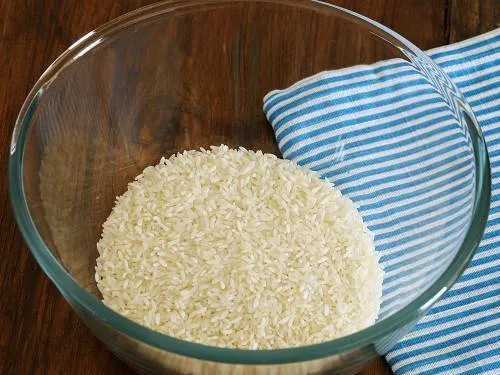
2. Pour water. Rub the grains and rinse the rice well a few times. Do not let the grains soak up in water.
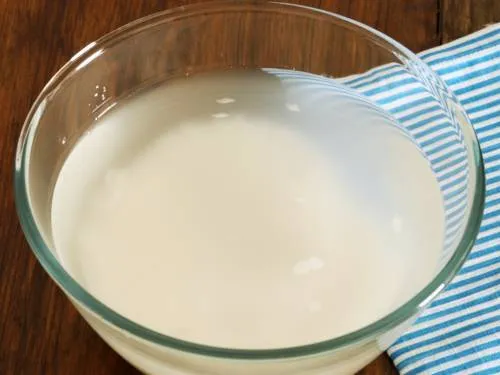
3. Drain to a colander and shake off a few times to remove the excess water. Spread the rice and leave it for 5 mins in the colander.
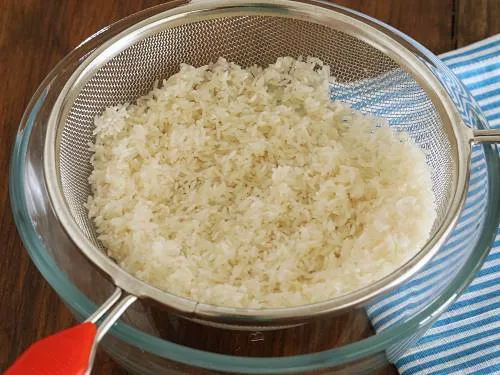
4. Transfer to a clean cotton cloth and pat dry.
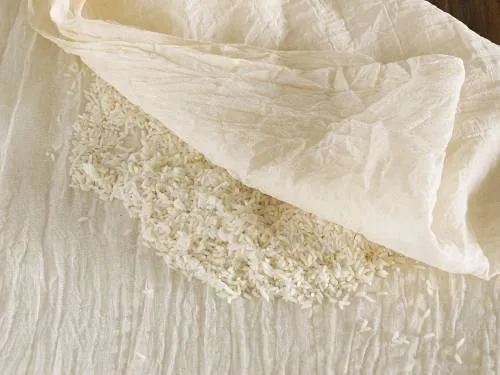
5. Here you have 2 options. The first option is to spread the rice on the cloth and leave it to air dry or fan dry. To quicken the process you may sun dry too. Rice grains should become crunchy.
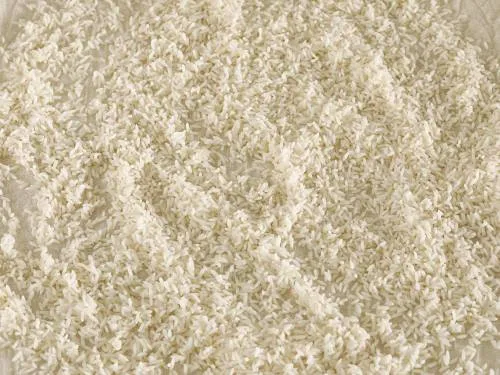
6. The second option is to dry roast the rice on a medium heat for 2 to 3 mins, stirring often. Then reduce the heat to low and roast until crunchy. Do not turn the flame high as we don’t want the grains to discolor and turn brown. This roasting step just takes about 6 to 7 mins, depending on the kind of pan used.
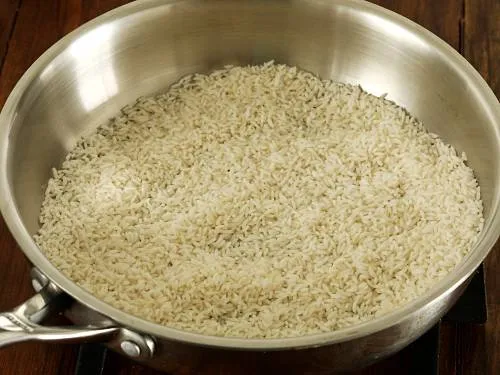
Make flour
7. Cool the rice and add it to the grinder jar.
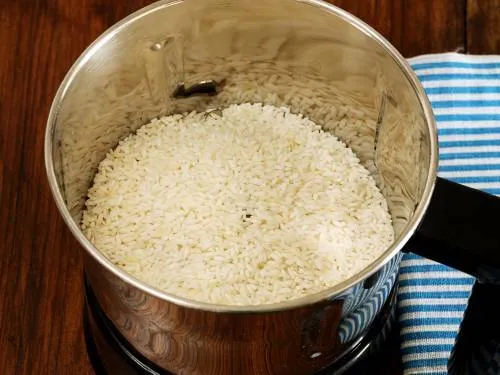
8. Run the grinder until the rice grains are powdered fully. Depending on the recipe you want to use it for, grind to a super fine or fine or coarse flour.
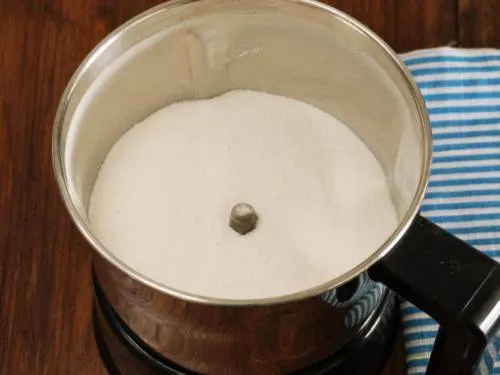
9. Place your sieve over a large wide bowl and transfer the flour to the sieve. If you want super fine flour, use a fine flour sieve.
If you don’t have a super fine flour sieve, tie a thin muslin cloth/ cheese cloth over the rim of a large bowl. Pour 1/4 cup flour each time over the cloth and pass it through the cloth. We follow this method to make baby cereal. This method works well even for brown rice flour.
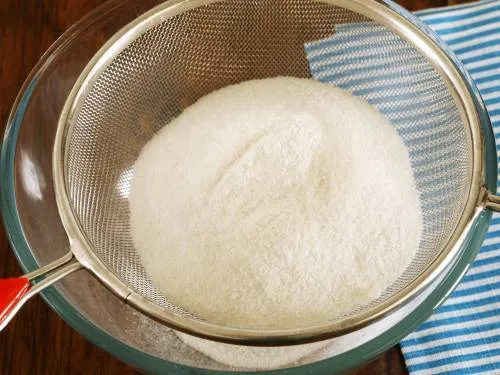
10. Grind the left over coarse grains again until all of them are used up to make fine flour. I didn’t have any coarse rice particles so didn’t have to grind again.
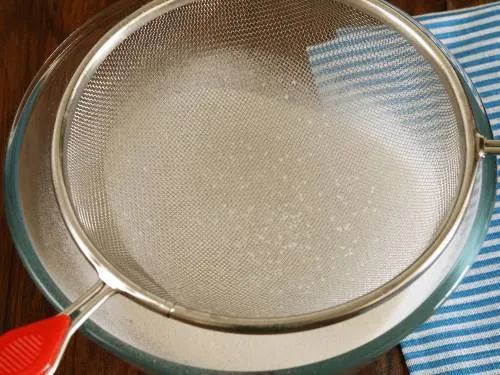
Store rice flour in a air tight glass jar for 2 months at room temperature or in the fridge for an year or longer.
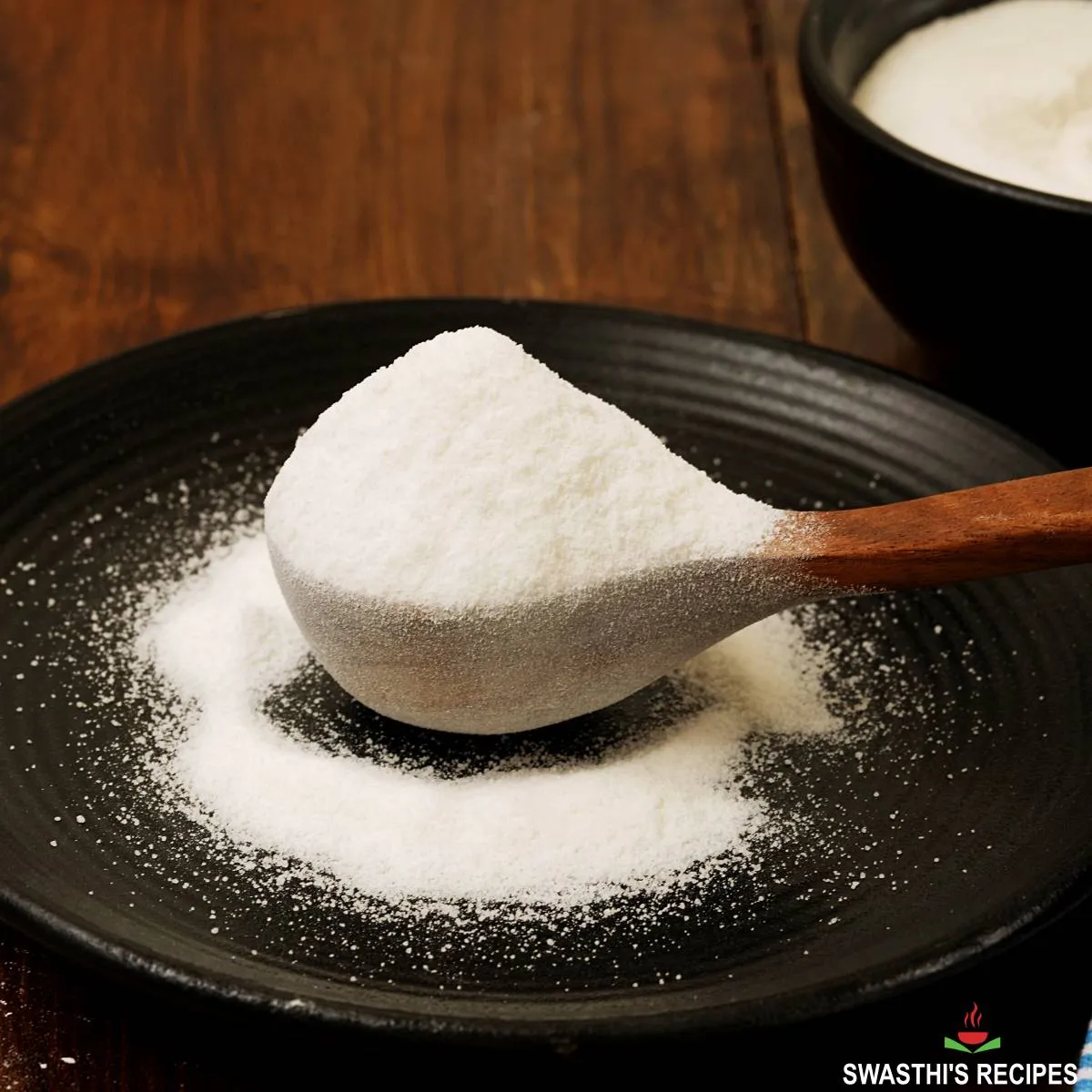
Benefits of Rice Flour
You’ve seen that rice, and by extension, rice flour is gluten-free and can be combined with other flours to make variety of dishes that require wheat.
Rice like most grains comes with numerous nutrients. It is a source of protein & some amount of fiber. You’ll find decent amounts of selenium, niacin, copper, phosphorus, vitamin E and calcium too. Particularly the whole grain kind, can boost your immunity as it contains zinc, magnesium and other essential minerals.
It contains choline, a compound that can protect your liver from damage including cancer. Phytic acid extracted from rice is used in products that treat skin conditions like acne and pigmentation.
On the other hand, wheat flour has better amounts of folate and antioxidants.
Faqs
No! Ground rice is a vague term to say rice that has been ground. It may be ground to broken rice, rice semolina, coarse rice powder or flour. But rice flour means coarse or fine flour.
Yes, just rinse the rice, drain, pat dry completely with a cloth. Spread and dry completely until the grains become crunchy. Then powder this to flour in a blender or coffee grinder.
Rice flour can be made manually from rice grains using a stone mill grinder.
You can use any kind of rice to make flour depending on what you want to use it for. Use sona masuri rice for murukku, chakli, use basmati or jasmine rice for snacks like pakora, cutlets, pancakes etc.
Yes you can use any kind of basmati rice. Aged, new, brown or white basmati rice, all work well.
Is rice flour better than cornstarch?
Cornstarch (corn flour) is primarily used as a thickener, binder and for breading items. Riceflour works well too, but it is much more versatile. This flour functions much like whole wheat or all purpose (refined flour) in many dishes. Both of these flours are healthier options.
Cornstarch has a distinctive starchy flavor to it if you haven’t cooked the dish for long enough. This is not the case with white riceflour, this flour is also considered to be healthier than cornstarch, particularly brown rice variant.
Related Recipes
Recipe Card
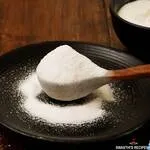
How to make Rice Flour at Home
For best results follow the step-by-step photos above the recipe card
Ingredients (US cup = 240ml )
- 1 cup rice (masuri, ponni, basmati, jasmine or any)
- water
Instructions
Prepare Rice
- Add rice to a bowl and pour water. Rub the rice well and discard the water.
- Repeat the rinse a few time, 3 times. Drain to a colander. Shake off gently to remove the excess water and leave it in the colander for 5 mins.
- Transfer to a absorbent cloth and pat dry.
- Spread the rice and let it air dry on the cloth until crunchy. Or alternately add it to a pan and roast the rice on a medium heat for 2 to 3 mins. Later reduce the heat and roast until crunchy. It takes about 6 to 7 mins.
How To Make Rice Flour
- Cool and add to a grinder jar. Grind in intervals of 1 minute until the rice grains are ground to a fine powder. If you want coarse flour you can instead pulse the rice in the grinder.
- Place a fine flour sieve over a large mixing bowl and transfer the flour to the sieve.
- Sieve the flour and add the coarse grains if any to the grinder. Grind again.
- If your grinder is not powerful enough, grind the sieved flour again. This gives you very very fine flour.
- Store rice flour in a air tight dry glass jar at room temperature for 2 months. You can refrigerate for an year or more.
Notes
- You can basically use any kind of rice to make flour. But each kind works differently in recipes so it is good to use the same kind called for in your recipe.
- Nutritional values are for 1 cup flour.
NUTRITION INFO (estimation only)
© Swasthi’s Recipes
About Swasthi
I’m Swasthi Shreekanth, the recipe developer, food photographer & food writer behind Swasthi’s Recipes. My aim is to help you cook great Indian food with my time-tested recipes. After 2 decades of experience in practical Indian cooking I started this blog to help people cook better & more often at home. Whether you are a novice or an experienced cook I am sure Swasthi’s Recipes will assist you to enhance your cooking skills. More about me
Follow Swasthi’s Recipes

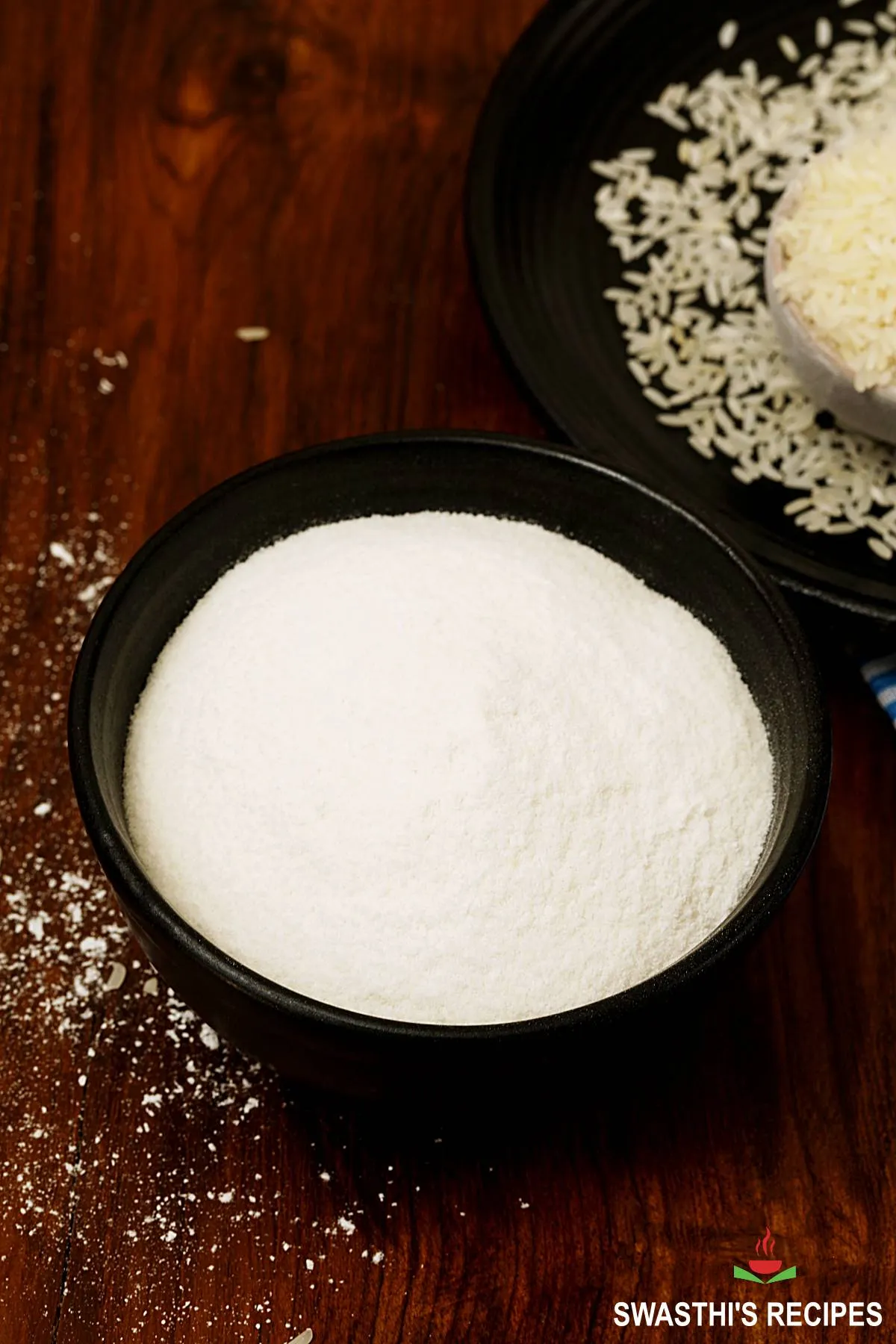
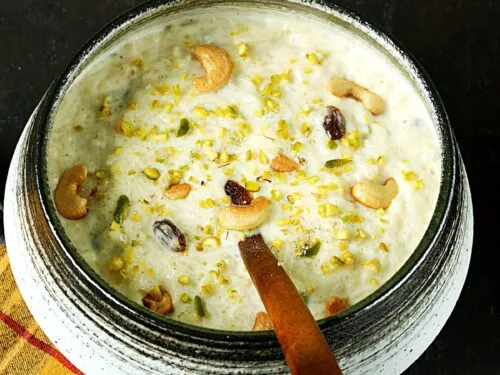
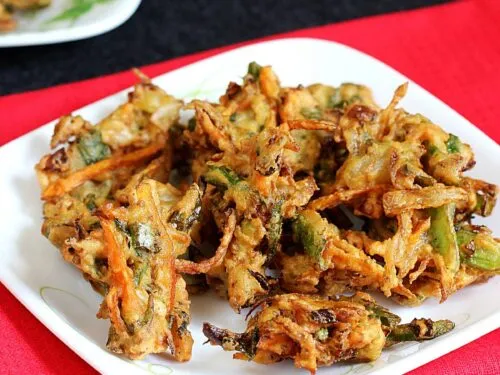
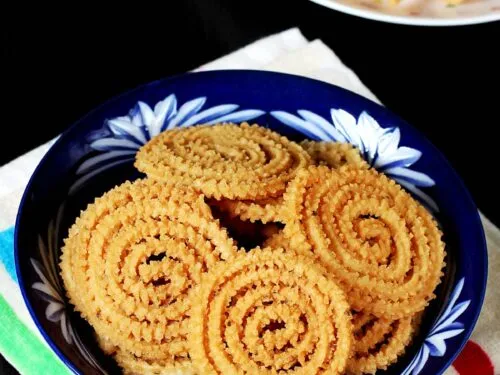
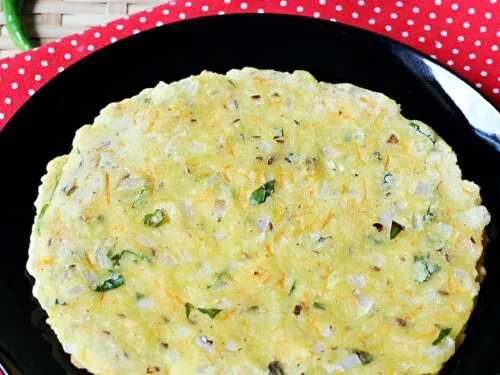
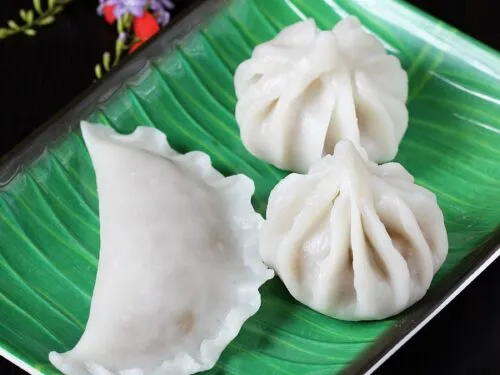
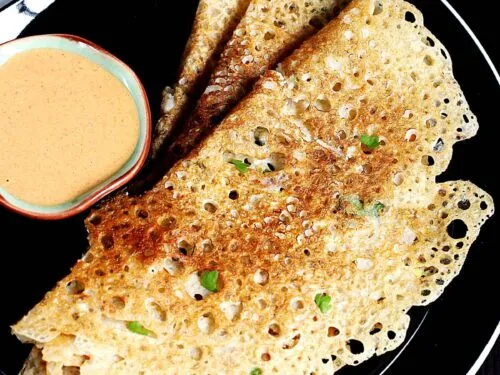
Comments
Thank you so much for this information. I have been trying to find out how to make rice flour and here you explained it well. Remain blessed
This is so great, thanks for sharing this. Would you happen to have tips or suggestions on how I can make my own rava at home. My kids have allergies and I cannot find rava and besan without cross contamination. Any suggestions on how I can make these at home with a mill would be so appreciated.
Hi Janhavi,
I have a separate post on how to make rava here. I hope this helps.
Good explanation, Thanks for your efforts
Excellent ?
Was grateful for this recipe
Thanks.
But can any blender be use for this?
I guess any blender can be used but it takes longer. Even a nutribullet works
Hey, thank you so much for this. Im gonna give it a try. Only thing I want to point out is that you mentioned rice is full of fiber. It actually is not, most certainly not white rice. Fiber content in white rice is very very low.
Hi Lea,
Thanks for pointing that! I meant that for brown rice. I am going to edit that.
Thank you. I made this to prepare porridge for my husband. Helped a lot
Hi Swasthi, you have given so many details in your blog. That seems to be an inspiration for me. Thanks for sharing this recipe.
Swasthi, I agree with Liza. Please share all your kitchen equipment and cookware in a separate post. That helps us to achieve best results. No doubt your recipes are fantastic but sometimes using the right equipment is necessary to achieve the same results. Thank you.
Hi Anusha,
Yes I understand. But the problem is a lot of equipment don’t last over an year, especially blenders, grinder, non-stick cookware etc. This stops me from sharing the brands or links. If you mean about the equipment in this post, I have used a mixer grinder from Ultra. If you like some cookware or equipment you can ask me so I can help you out with the details. Hope you understand.
Information like what type of equipment works better, a coffee grinder, food processor or a blender? Please any advice is appreciated.
Hi Liza,
A coffee grinder or a spice grinder works best for making rice flour. I have used a grinder from an Indian Brand “ultra”. Hope this helps
I use a grain mill I can’t wait to try some of these recipes . I didn’t know about using different types of rice for different uses so that was great information.
Thank You so much.
I have only blender, can it go with?